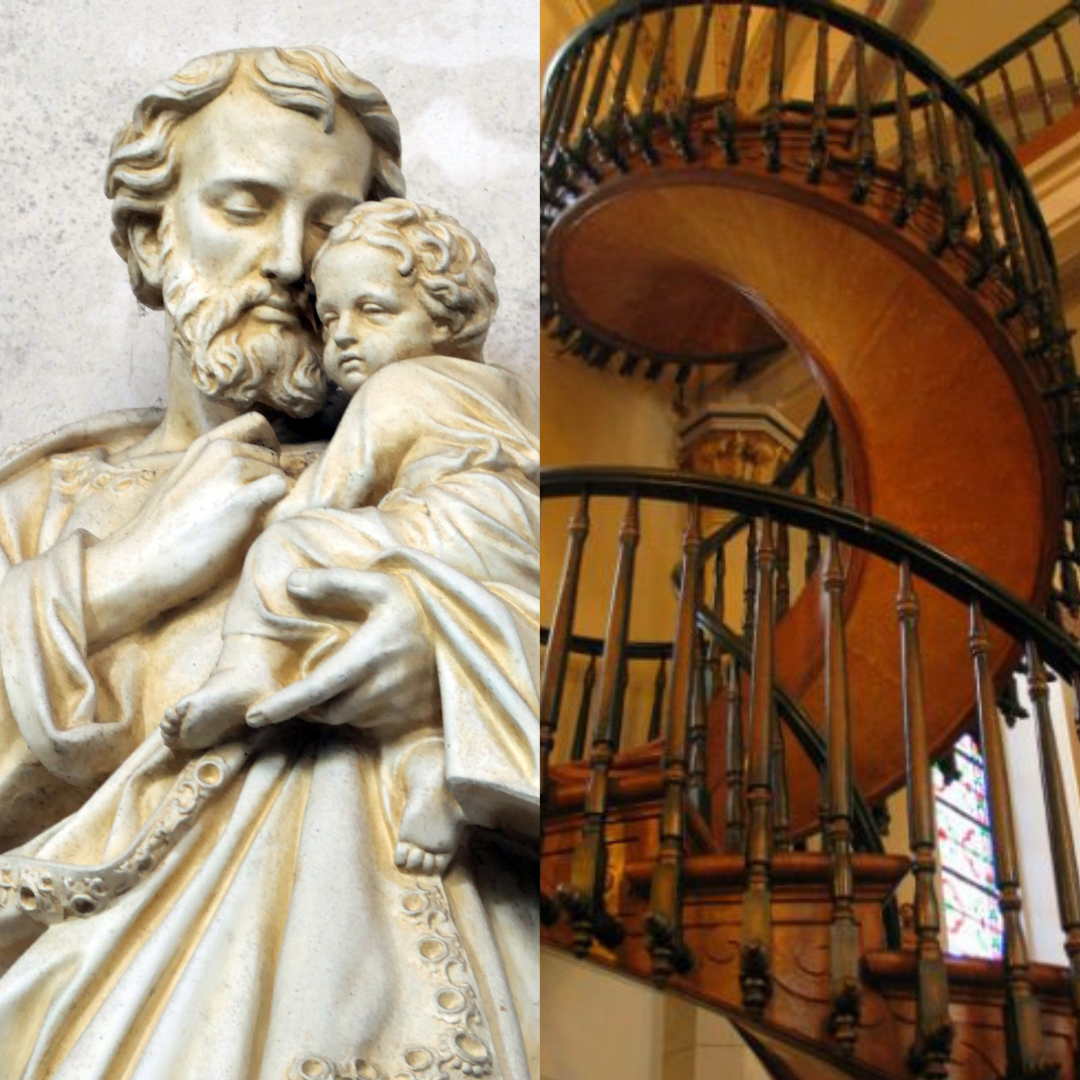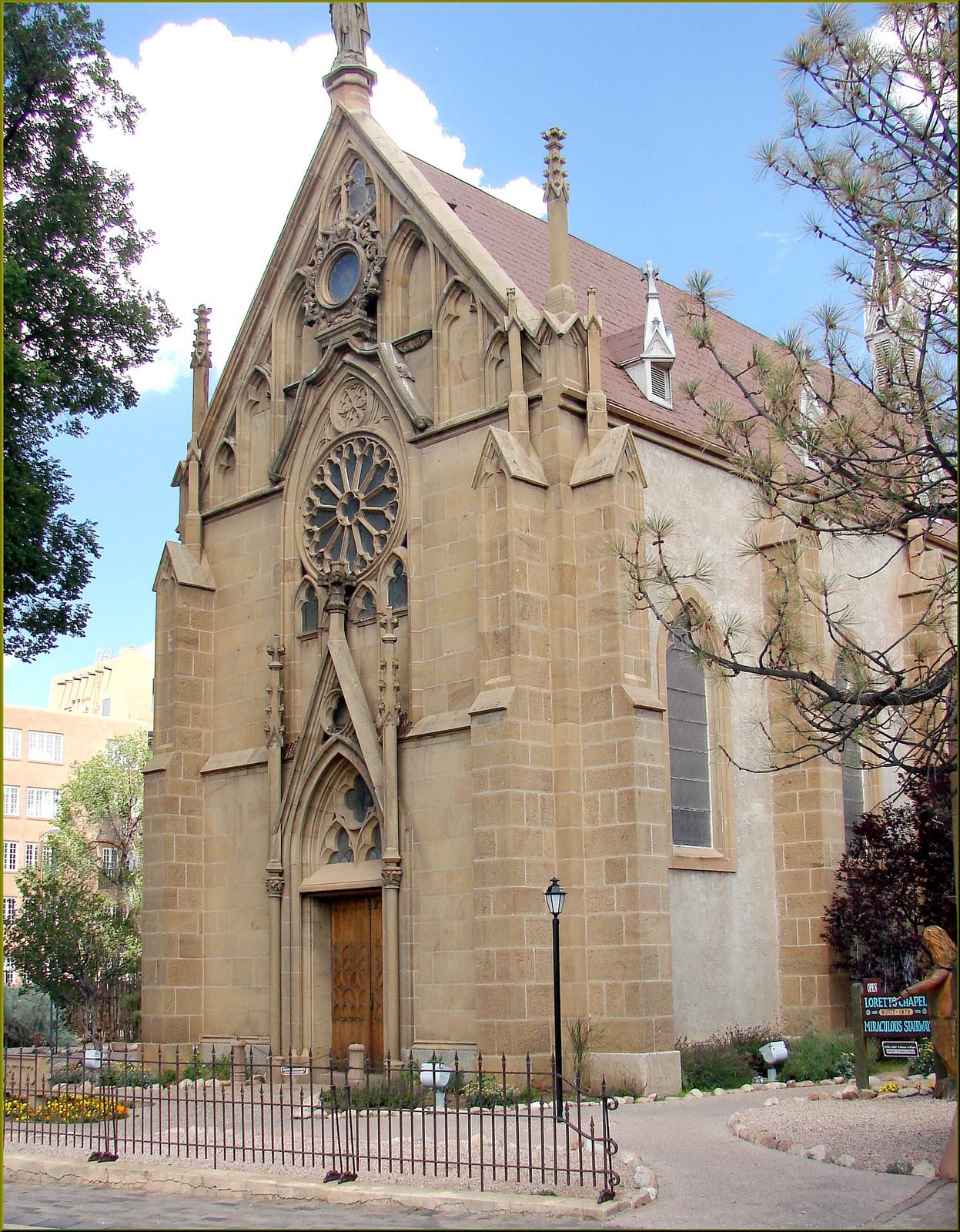Did Saint Joseph Build This Miraculous Chapel Staircase? The Mysterious Legend

Do you think Saint Joseph built this miraculous staircase?
In 1850, Bishop Jean Baptiste Lamy of the Apostolic Vicariate of New Mexico saw a need for Catholic girls’ education in his area, so he sent requests to religious Catholic teaching orders. The Sisters of Loretto responded to this call.
In 1853, the Sisters of Loretto opened a school for girls in Santa Fe, New Mexico.
Twenty years later, they hired the same architect as the Cathedral Basilica of St. Francis of Assisi.
This architect designed the sisters a beautiful, gothic-style chapel, formerly known as the Chapel of Our Lady of Light. It is now the Chapel of Loretto.
(Sadly, the chapel is no longer affiliated with the Catholic Church. It is used as a museum and hosts non-denominational weddings.)
Here’s a photo of the Chapel of Loretto:

However, the architect died before building access to the choir loft. Due to little space, they concluded that a staircase took too much room, therefore minimizing seating.
The Mysterious Legend
Legend says the sisters then began a nine-day novena to Saint Joseph the Carpenter. On the ninth day, a mysterious man looking for work arrived on their doorstep with only a donkey, a hammer, and a carpenter’s square.
According to the Loretto Chapel’s official website, the man only used “simple tools and wooden pegs. The rare wood is not native to the American Southwest.” They know he used a type of spruce wood, but no one knows where it came from or how the carpenter got it.
Legend also says that while building the staircase over a three-month period, no one ever saw him enter or leave the chapel. Once he completed it, he disappeared without payment or a thank you.
The sisters also contacted lumber stores in the area, but could not retrieve any open accounts for the supplies he supposedly purchased.
Here’s a photo of the Loretto Chapel staircase:
Here’s the chapel’s description of the staircase’s current state:
“The staircase has two complete 360-degree turns with no center pole for structural support. The entire weight of the staircase rests on the bottom stair.
“The banisters were added approximately ten years later due to the difficulty of climbing the tall, tapered stairs with no railing.
“The two small brackets that can be seen on the outside connecting the stairs to the wall and pillar were added in the mid-20th century in order to provide more support and protect the staircase from negative effects due to vibrations from passing cars and trucks.
“Unfortunately, rather than helping the structural integrity of the staircase, the modern brackets damaged the sides of it by preventing the natural spring-like movement of the staircase while in use. The underside of the stairs was originally open, but was filled in with a horse hair and lime mixture painted to look like wood.”
The website also says that some believe that Saint Joseph built this amazing structure. Others believe Saint Joseph sent someone to do it. The website adds that the staircase still “perplexes experts today.”